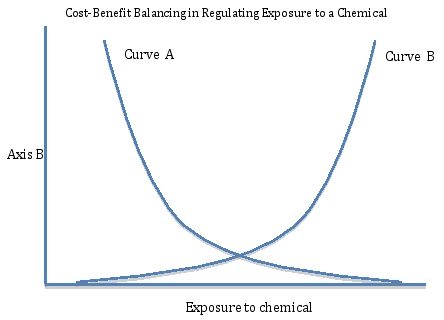A) 1970s; Oregon
B) 1950s; California
C) 1950s; Oregon
D) 1970s; California
Correct Answer

verified
Correct Answer
verified
Multiple Choice
The European Commission adopted a mandatory directive electronic and electrical equipment requiring producers to assume responsibility for their e-waste throughout the lifecycle of the product.This is an example of a
A) producer fee system
B) producer take back program
C) producer deposit refund program
D) consumer deposit refund program
Correct Answer

verified
Correct Answer
verified
Multiple Choice
The major US law that has established a liability provision for the damages done to US natural resources is
A) the National Contingency Plan (NCP)
B) the Comprehensive Environmental Response, Compensation and Liability Act (CERCLA)
C) the Resource Conservation and Recovery Act (RCRA)
D) the Emergency Planning and Community Right to Know Act
Correct Answer

verified
Correct Answer
verified
Multiple Choice
Many object to the balancing approach for regulating chemicals because
A) scientific results are often too weak to show benefits and costs clearly
B) matters of life and death are moral issues, and should be treated as such
C) politicians, not economists, should determine the values that society places on outcomes
D) all of the above
Correct Answer

verified
Correct Answer
verified
Multiple Choice
The largest impairment to water quality is now non point source pollution and ________ programs are paramount for controlling these emissions.
A) federal
B) state
C) municipal
D) international cooperative
Correct Answer

verified
Correct Answer
verified
Multiple Choice
Federal water-pollution law, incorporating technology based effluent standards, works through
A) a permitting system
B) CAFÉ standards
C) a single stream recycling system
D) a pay as you throw (PAYT) system
Correct Answer

verified
Correct Answer
verified
Multiple Choice
Hazardous and toxic materials have characteristics that present unique challenges for monitoring and control, such as
A) they are found everywhere in the modern economy
B) the sheer number of them leads to difficulty in being informed about the levels of danger
C) the quantity used can be very small, leading to difficulty in monitoring
D) all of the above
Correct Answer

verified
Correct Answer
verified
Multiple Choice
The primary regulatory approach to regulating toxic emissions has been to use technology based effluent standards.All of the following are technology based effluent standards except
A) Best Available Technology (BAT)
B) Maximum Achievable Control Technology (MACT)
C) Reasonably Available Control Technology (RACT)
D) Most Often Applied Technology (MOAT)
Correct Answer

verified
Correct Answer
verified
Multiple Choice
 -Refer to the figure above.In the graph above, Curve B would be labeled
-Refer to the figure above.In the graph above, Curve B would be labeled
A) Marginal Control Costs (of reducing the levels of exposure)
B) Marginal Benefits (of higher or lower health risks when exposure changes)
C) Marginal Demand Curve (for reduced health risks)
D) Marginal Willingness to Pay Curve (for reduced health risks)
Correct Answer

verified
Correct Answer
verified
Multiple Choice
Refer to the figure above.If the labor market works efficiently and workplace standards are managed such that each firm manages risk individually (there is not a set standard) then
A) the wages in high exposure jobs will be lower than those high exposure risk jobs
B) the wages in high and low risk jobs will be equal, which is inefficient
C) the wages in low exposure risk jobs will be higher than those in high exposure risk jobs
D) as long as the labor market is competitive and participants have knowledge, the labor market will compensate workers experiencing higher risk with higher wages
Correct Answer

verified
Correct Answer
verified
Multiple Choice
Rachel Carson's book, Silent Spring (1962) , documented ecosystem damage caused by
A) the experiences of Love Canal, where homes were exposed to hazardous waste
B) a chemical spill in the Elk River in Charleston, West Virginia
C) the chemical spill in Bhopal, India
D) DDT, a popular pesticide
Correct Answer

verified
Correct Answer
verified
Multiple Choice
 -Refer to the figure above.In the graph above, the vertical axis (Axis) would be labeled
-Refer to the figure above.In the graph above, the vertical axis (Axis) would be labeled
A) $
B) time or distance
C) units of reduced health risk
D) abatement units (metric tons, dissolved oxygen, parts per million)
Correct Answer

verified
Correct Answer
verified
Multiple Choice
Policy makers have begun to regulate toxic emissions by 'moving back up the line' and encouraging waste reduction.All of the following are effective incentives to encourage waste reduction except
A) emissions charges
B) deposit refund systems
C) increasing transparency about the release of toxic materials
D) regulations that dictate particular technology choices for firms using toxic substances
Correct Answer

verified
Correct Answer
verified
Showing 41 - 53 of 53
Related Exams